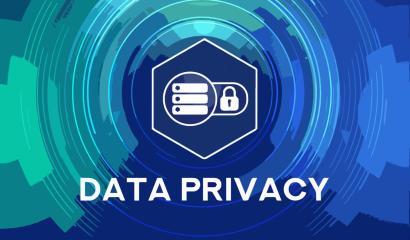Ali Abbas
5 regulations likely to hit Buy Now, Pay Later (BNPL)
Buy now pay later or BNPL has rocketed in popularity. Although the concept has been around for a while, the likes of Klarna, Clearpay, Laybuy, Payl8r, OpenPay and Splitit exploded into the mainstream during the pandemic. The platforms provided welcome access for much-needed goods and services, as consumers struggled to stay financially afloat. In 2020 alone, roughly one in five customers went down the deferred payment route in the UK. In the US, more than 37% of Americans had used BNPL by July 2020. The numbers are only increasing.
But what about when BNPL is not being used to help cash-strapped families get through hard times? Increasingly, the debt is being marketed to young people for cheap and unnecessary fashion items. And the authorities are not happy. As droves of students and Gen-Zs get washed up in the aspirational ads and effortless credit, regulators are taking action.
In the UK, The Woolard Review (a government-led research paper investigating the damage caused by BNPL) was published in 2021. It highlighted six major concerns around consumer detriment and called for urgent regulation.
In the US, BNPL has caught the eye of federal regulators as well as consumers, with the Consumer Financial Protection Bureau (CFPB) opening an enquiry into BNPL credit at the tail-end of last year.
Regulation is coming…
Wiggling through loopholes in the law, BNPL is currently unregulated. This means that consumers lack protections, which is especially problematic when a large proportion of BNPL consumers are financially vulnerable to start with. However, regulatory messaging across the globe suggests that this is all about to change – regulation is on the horizon. To avoid BNPL becoming “the next Wonga”, as one politician put it, we explore the 5 regulatory changes likely to come into play:
1. Clamping down on advertising
You can’t miss the BNPL adverts. Commuters on the London underground face bold green and pink billboards instructing them to, “Shop like a Queen in the Klarna app”. And for Instagram-users across the globe, targeting is relentless. In December 2020, Klarna came under fire from the Advertising Standards Authority (ASA) for placing “irresponsible” ads and was forced to take adverts down.
Soon, BNPL promotions will probably need to follow the same strict advertising standards as banks and financial services. “Consumer protection could be strengthened further by the application of financial promotions regime to BNPL”, the HM Treasury paper reads. This means that promotions would have to be approved by the FCA.
In the US, a report by MediaRadar found that the four leading BNPL providers spent $52 million on advertising between January-September 2021. It is likely that – if the US were implement similar advertising standards for BNPL, we would see a marked shift in this spend – and a move towards clearer, more transparent promotion.
2. Customers need to know what they’re getting in to
One of the major criticisms of BNPL is that the process is, “so frictionless, it’s almost slippery”. Indeed, many will have witnessed the lure of BNPL at online checkouts. PayPal, for example, now offers the option to pay on credit for almost every transaction – at the click of a button. According to the Citizen’s Advice Bureau, this is causing some customers to find themselves in debt without “without even realising”. This is supported by the National Consumer Law Centre in the US, that has said “consumers can accumulate a lot of debt without realising it.”
Upcoming regulations will almost certainly put a sudden stop to this and will ask for transparency across every step of the BNPL process. Pre-contractual information will be required as standard, so that the customer knows what they are getting into before committing. Importantly, what happens when they are unable to pay must be transparent too. For many, the abrupt appearance of debt collectors or a dip in credit scores is both shocking and can lead to wider vulnerabilities being exploited.
3. More friction needed
Transparency isn’t always easy and will likely require additional steps to be added into the BNPL process. Information will need to be hard to miss for consumers – which will likely mean adding an extra click, more fine print to read, and more work for the consumer.
“In practice, this would mean that there would be more friction in the transaction”, elaborates the HM Treasury consultation paper. “…Giving customers an opportunity to consider whether the agreement they are entering into meets their needs”.
For some, more steps in the process might be jarring. But it is likely that a more obstructive process will dissuade consumers who perhaps can’t afford a BNPL purchase – or give them longer to consider whether the BNPL option is an affordable, risk-free one.
4. Credit checks could come into play
If customers default, BNPL brands tend to issue late fees – a practice which can make up a significant portion of the firm’s overall revenue. These fees – partnered with a failure to pay – can have significant repercussions for consumers’ credit, that they may fail to understand until it’s too late. The irony of it is that many BNPL vendors do not check the credit worthiness of consumers who look to borrow in the first place. No credit checks on the way in – leading to potentially damaging bad credit on the way out.
In turn, this can lead consumers down a path of financial difficulty, with BNPL firms often failing to treat customers fairly as a result. This is an issue that has not gone unnoticed by the UK’s FCA, who have a keen focus on how financial services treat their customers – particularly vulnerable ones.
It is likely, then, that we will see regulations that are twofold here: those that protect consumers, and those that oblige a firm to assess affordability and credit worthiness before entering into a BNPL agreement. This may take the wind out of the sails for BNPL but would prevent harmful outcomes for consumers.
5. More consistency needed across customer experiences
In it’s consultation paper, the UK government has highlighted inconsistent experiences for customers as a key concern. Some BNPL firms come down on defaulting payments hard, with debt collectors and credit score hits. While others have more lenient approaches. Also, with the same BNPL platform, customers can have drastically different experiences depending on whether they are in financial difficulty or not.
To address these concerns, it’s likely that some sections of Consumer Credit Act (CCA) will start to apply to BNPL firms. The paper recommends applying sections 76, 86b, 86c, 86e, 87, 88 and 89. These sections impose certain obligations on lenders when it comes to customers experiencing financial difficulty. In the words of the paper, “Applying these requirements to BNPL could help address the lack of consistent treatment of customers”.
In the US, the Senate has called on the BNPL market to be more joined-up both in experience and in regulation. Consumers, the Senate suggests, are not aware of the gaps that exist and “may be erroneously led to believe that credit obtained from a BNPL provider comes with protections that are similar to those for credit cards. This regulatory gap has troubling implications.”
When are new regulations likely to come in?
The sticking point for regulatory action lies in the fact that regulators have thus far been unable to determine whether BNPL agreements actually amount to loans. Without a clear understanding of what these transactions actually are, it is difficult to implement clear regulatory frameworks.
Right now in the UK, the government is considering if and how BNPL firms should be regulated. The deadline for contributions and information already passed on the 22nd January 2022. Now, we wait to hear the verdict.
In the US, the CFPB has asked for industry comment around BNPL in an amendment to its inquiry with a view to better understand the industry, though a closing data has not yet been published. Some argue that BNPL falls under the federal Truth in Lending Act – but the above lack of clarity around definition means there is lack of clarity. The most clarity we have seen is out of California, which has taken the step to confirm some BNPL offerings as loan. In fact, the California Department of Financial Protection and Innovation took decisive action against three BNPL companies last year, on the grounds that they had sold illegal loans.
Some work and changes are already occurring, albeit on a case-by-case basis. For example, on Valentine’s Day in 2022, the FCA got in touch with BNPL providers Clearpay, Klarna, Laybuy and Openpay… But it wasn’t to send a card. The regulator instructed the firms to make changes to their contracts around refunds and cancellations.
Regulation is on the horizon, and BNPL firms should be mindful of impending changes that could serve to change the face of BNPL significantly. Without clear regulatory guidance – or indeed a standard regulatory definition – it is hard to predict what is to come. However, the above 5 points are a good starting point, and firms should consider what preparatory steps they should take so that they are one step ahead of regulatory change. Better to set the trend for ethical lending than orchestrate a mad-dash to please the regulators.
Keep ahead of emerging regulations for Buy Now, Pay Later – speak to CUBE.







